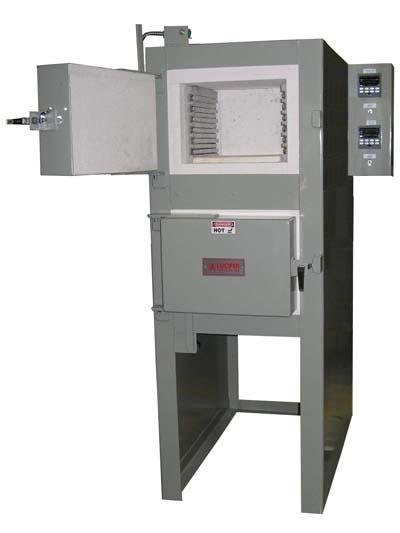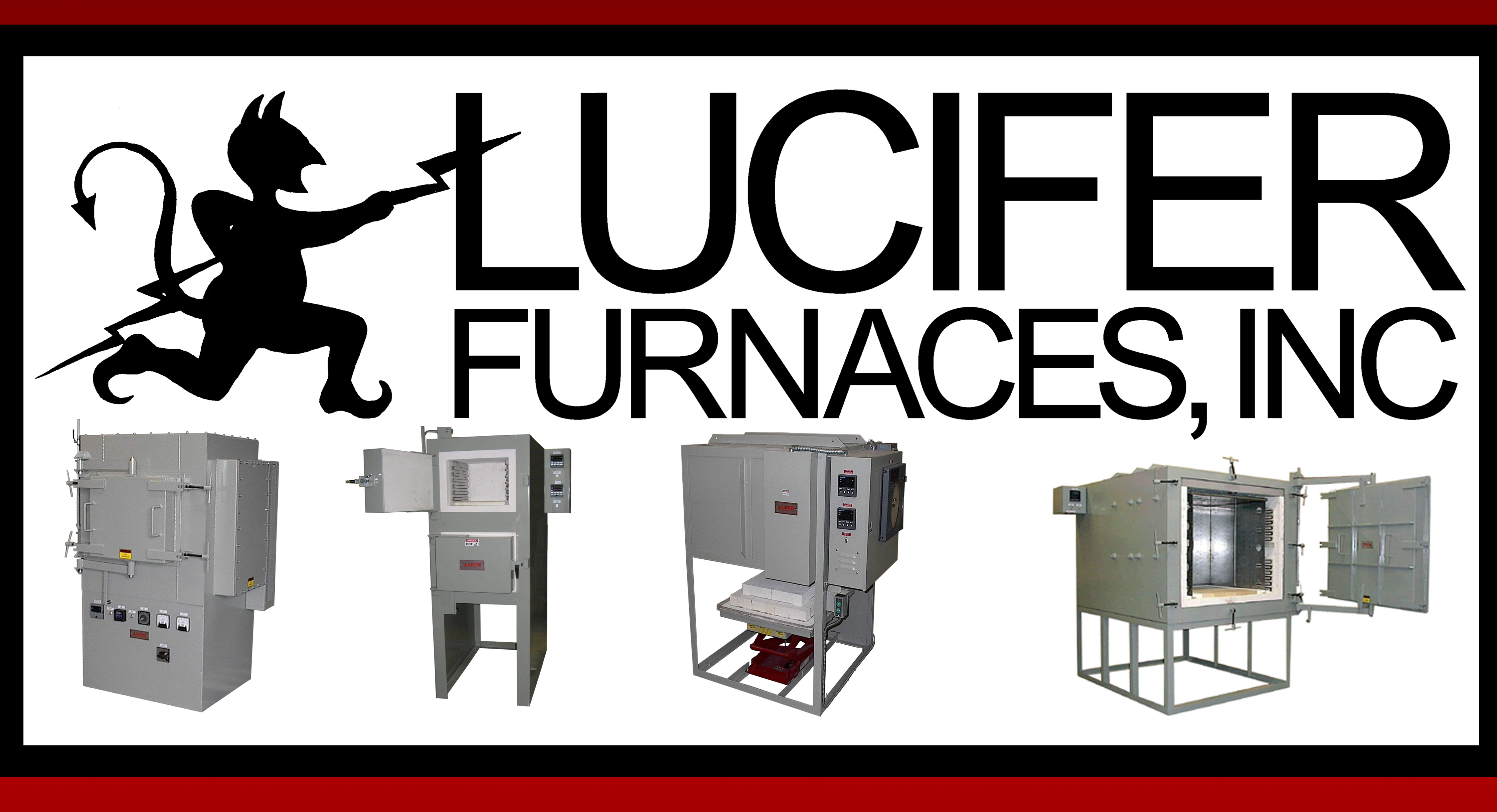
Lucifer Furnaces Inc. has shipped a Red Devil Dual Chamber heat treating furnace, Model RD8-H14, to Anomatic Corp. in Newark, Ohio, a supplier of anodized aluminum packaging.
With an upper hardening chamber of 9"H x 12"W x 14"L and a lower tempering chamber with the same working dimensions, this space saving unit is a complete heat treating system with 7 KW of power. Both chambers feature a ceramic hearth plate for load support of 25 lbs. per square feet of hearth area and are lined with 4 ½" of combined lightweight firebrick and mineral wool insulation for energy efficient operation.
The upper chamber heats to 2200°F with easy-to-replace heavy gauge wire wound heating elements in radiant panels. The lower draw chamber heats to 1200°F with air recirculation provided by a rear mounted stainless steel, high volume CFM fan assembly. Both chambers are completed with a horizontal swing door with safety microswitch to shut off power to the chamber when the door is opened. Each chamber is controlled independently through Honeywell digital temperature controllers mounted in a side mounted NEMA 1 control panel.
The Red Devil dual chamber furnace is constructed with heavy gauge reinforced sheet steel, and shipped completely wired, assembled and test fired, ready for connection to a power supply.
Contact Details
Related Glossary Terms
- hardening
hardening
Process of increasing the surface hardness of a part. It is accomplished by heating a piece of steel to a temperature within or above its critical range and then cooling (or quenching) it rapidly. In any heat-treatment operation, the rate of heating is important. Heat flows from the exterior to the interior of steel at a definite rate. If the steel is heated too quickly, the outside becomes hotter than the inside and the desired uniform structure cannot be obtained. If a piece is irregular in shape, a slow heating rate is essential to prevent warping and cracking. The heavier the section, the longer the heating time must be to achieve uniform results. Even after the correct temperature has been reached, the piece should be held at the temperature for a sufficient period of time to permit its thickest section to attain a uniform temperature. See workhardening.
- tempering
tempering
1. In heat-treatment, reheating hardened steel or hardened cast iron to a given temperature below the eutectoid temperature to decrease hardness and increase toughness. The process also is sometimes applied to normalized steel. 2. In nonferrous alloys and in some ferrous alloys (steels that cannot be hardened by heat-treatment), the hardness and strength produced by mechanical or thermal treatment, or both, and characterized by a certain structure, mechanical properties or reduction in area during cold working.

